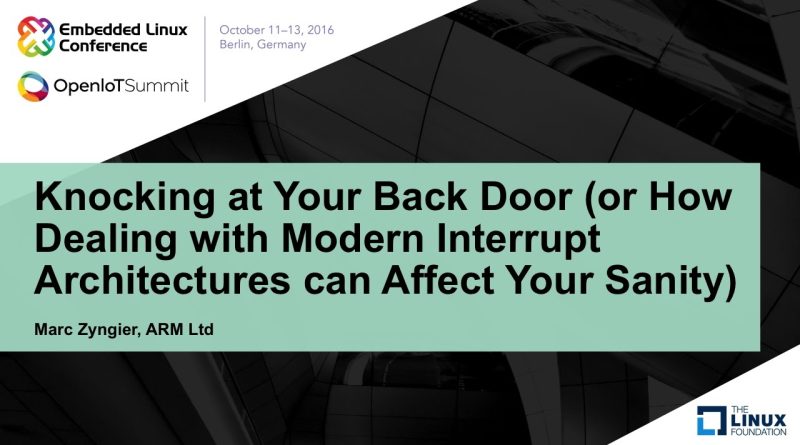How Dealing with Modern Interrupt Architectures can Affect Your Sanity
Knocking at Your Back Door (or How Dealing with Modern Interrupt Architectures can Affect Your Sanity) – Marc Zyngier, ARM Ltd
Interrupts used to be simple: a wire that a device would shake when something happened, and to which the CPU would respond. Those were the days when all you had to know was whether the signal was edge or level. Things became more interesting with cascading interrupt controllers, fast EOI, shadow controllers, MSIs and translation tables. You quickly realize that dealing with interrupts has become quite complex.
Over the past couple of years, the interrupt subsystem in Linux has evolved to support these dramatic changes in the landscape, allowing basic functionalities such as irqdomain and irqchip to be assembled into hierarchies in order to represent the complexity of the hardware (and put it to good use). This presentation will go over these evolutions, how the Linux kernel handles them, and what it means for the hacker putting together the support for a new platform.
About Marc Zyngier
Marc Zyngier has been toying with the Linux kernel since 1993, and has been involved over time with the RAID subsystem (MD) and all kinds of obsolete architectures (by maintaining the EISA bus). He also messed with consumer electronics, and now co-maintains KVM on ARM(64) as well as some of the IRQ infrastructure (irqchip, irqdomain).
by The Linux Foundation
linux foundation



